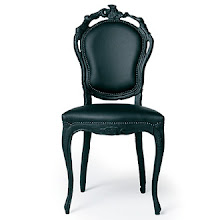Citation: Lacey, E. (2009). Contemporary ceramic design for meaningful interaction and emotional durability: A case study. International Journal of Design, 3(2), 87-92.
67. The paper presents a case study of the design of emotionally durable ceramics, which is then applied in real commercial contexts. It illustrates how designers can be inspired by hand crafted unique objects, and how designers in turn can translate some of their qualities for use in mass-produced objects.
‘fewer better things’ (personal communication, February, 2007),
for example ceramic objects which transcend the fast moving home-ware trends and remain loved and relevant over extended time. As observed through personal experience, value beyond monetary cost can be assigned to individual handmade products. It is this uniqueness and integrity of material and process seen in handmade crafts that are hoped to be imbued into commercial products in order to make them emotionally durable.
How could one design ‘unique’ pieces that would be valued on a personal level and which could also be industrially mass produced? The notion of integrity is central in this contradiction.
89. The design explorations resulted in the main proposition that design (or craft) features that take the user on a journey contribute to meaningful experience. In the case of hand-made or hand-finished products, visual clues, such as an unglazed
area or an irregularity in form, can lead to tactile investigation of these unique or seemingly unique qualities. It is this level of consciousness required to explore the object in detail that is the aim of the author’s own designs, in hopes of enhancing the user’s initial experience of an object in a way that encourages one to
return to explore the details again and again.
The surprise element described in the experience of the TAC01 can be seen as a cue to explore the product.
In his book Emotionally Durable Design (2005), Jonathan Chapman proposes that we might address issues of sustainability through exploring product lifespan and relating this to peoples’ emotional needs. He describes a ‘utopian futurescape’ where design is derived from “profound and sophisticated user experiences that penetrate the psyche over time” (p. 83).
90. The reflective answers provided levels of personal attachment that the designer cannot (or perhaps should not) try to contrive. The user autonomy, which is asserted here, is evidently connected to the very individual, social, cultural and emotional
value of the object and perhaps suggests that the designer should look at ways in which to leave space in the design for the consumers’ own interpretation, rather than design a piece to be used only as directed by the designer. For example, enabling
the user to personalize an object or adapt the way it is used. This concept is illustrated in the following section.
Creating the perfect ceramic : The first was to add an element of surprise that
would nudge the user into exploring the object consciously. The second was to incorporate a unique element that would give the object an individual identity, again to nudge the user into closer inspection. The third was to allow for a level of interaction which could be personal and which was beyond simply drinking tea or
coffee.
Subscribe to:
Post Comments (Atom)

No comments:
Post a Comment